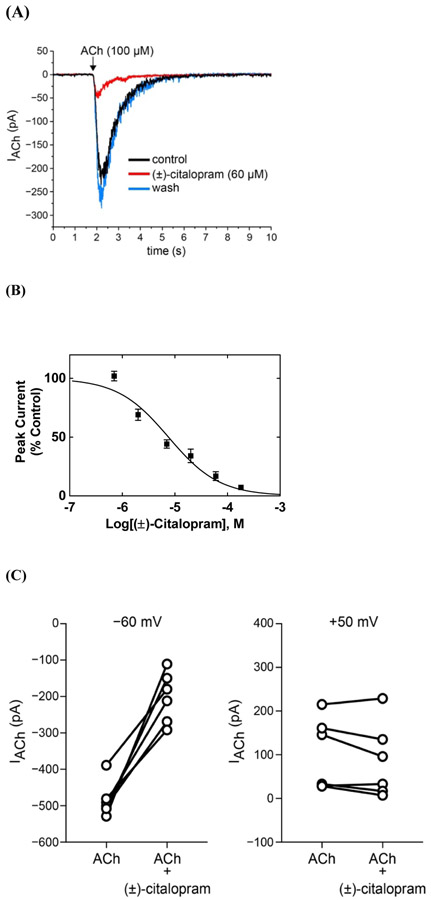Fig. 3.
Inhibitory potency of (±)-citalopram on ACh-evoked currents from MHb (VI) neurons. (A) ACh puffer (100 μM)-evoked currents from MHb (VI) neurons are decreased by 60 μM (±)-citalopram. The puffer was performed for 250 ms at a pressure of 12 psi. After washing, the peak amplitude completely recovered, indicating a reversible inhibition. (B) Concentration-response relationship for the inhibitory activity of (±)-citalopram on ACh-evoked currents from MHb (VI) neurons. Response was normalized to the maximal ACh response which was set as 100%. The plot (r2 = 0.90) is representative of 5-8 determinations (mean ± SEM). The calculated IC50 and nH values are summarized in Table 1. (C) Voltage-dependence of (±)-citalopram-induced inhibition of ACh-evoked currents from MHb (VI) neurons. Steady-state ACh puffer (100 μM)-evoked currents from MHb (VI) neurons were recorded at −60 mV and +50 mV in the same cell, in the absence and presence of 60 μM (±)-citalopram. Data plots show ACh-activated currents before and after (±)-citalopram superfusion at the indicated membrane potential. Paired Student's t-test analyses indicated that (±)-citalopram reduced ACh-evoked response amplitudes by 42.4 ± 6.1% at −60 mV (p = 0.0006) and 74.6 ± 13.6% at +50 mV (p = 0.1494).

